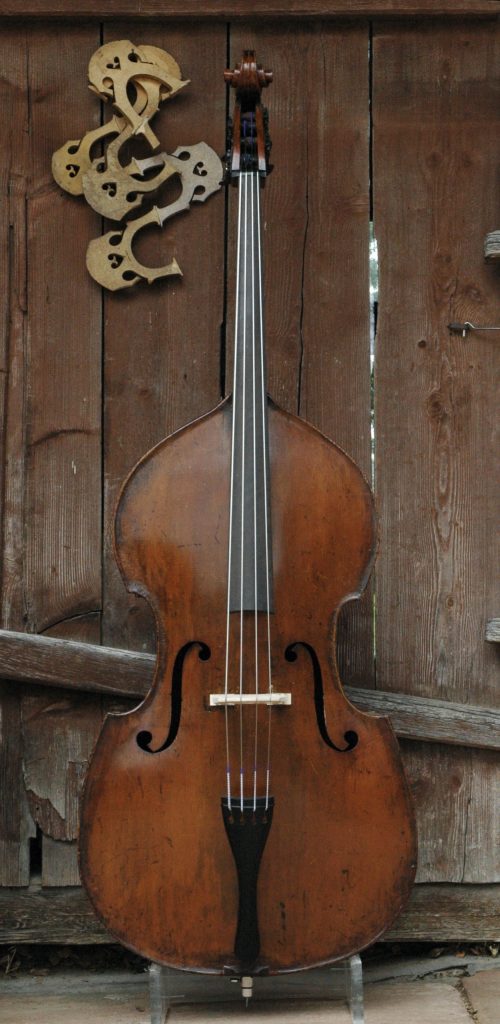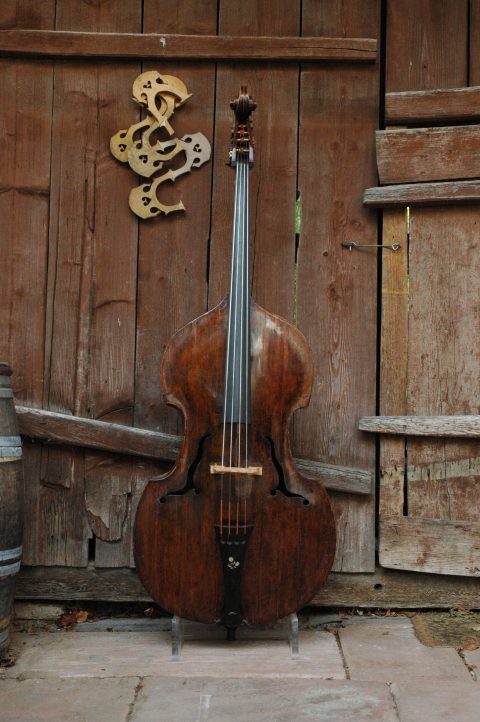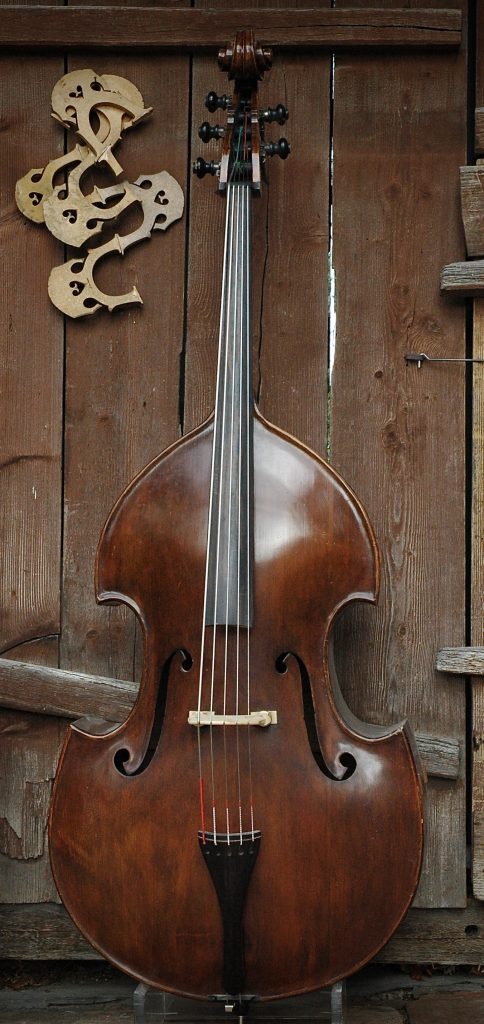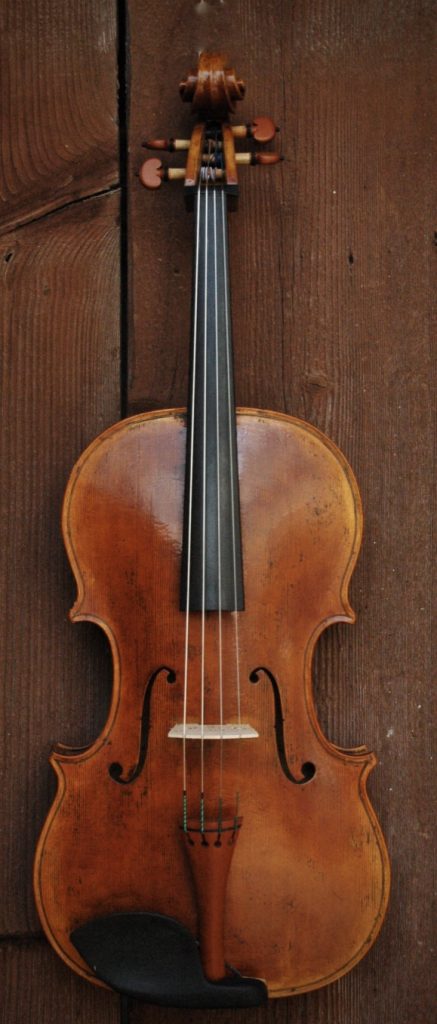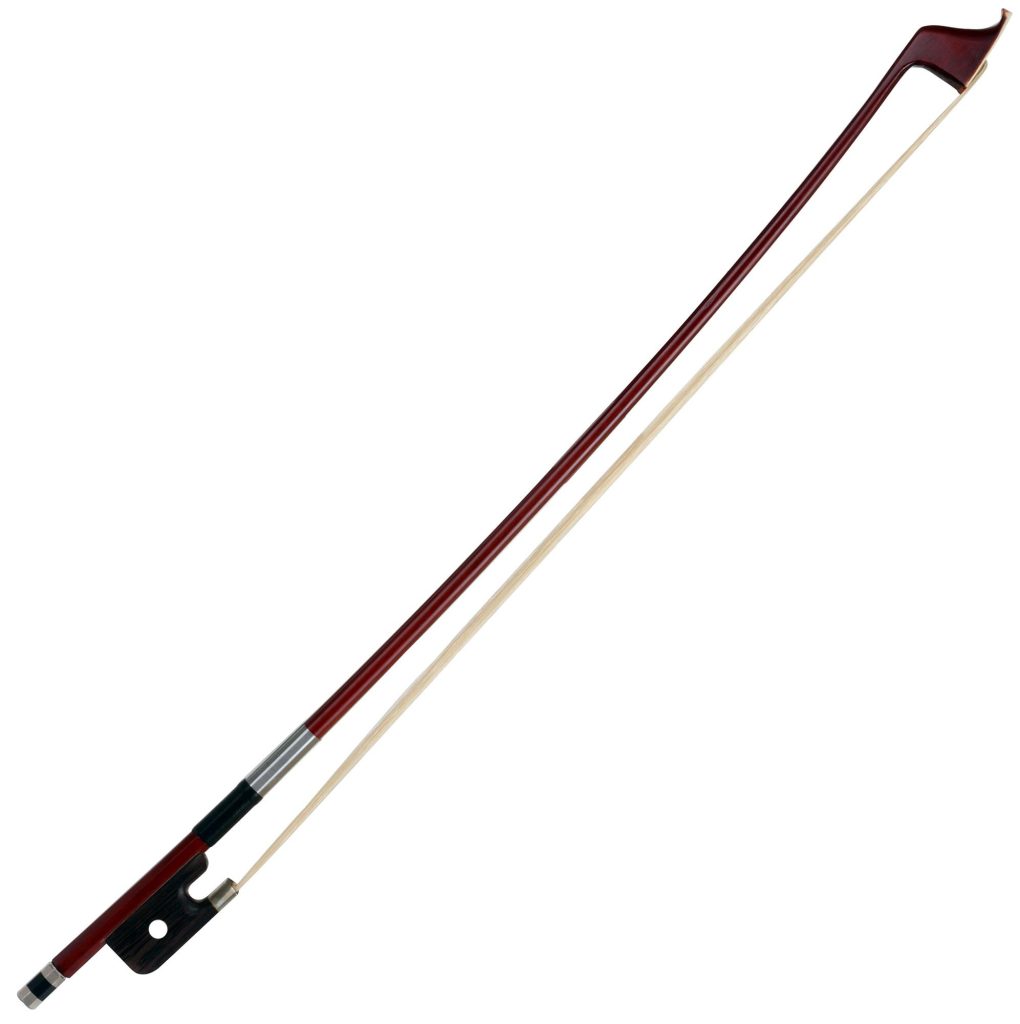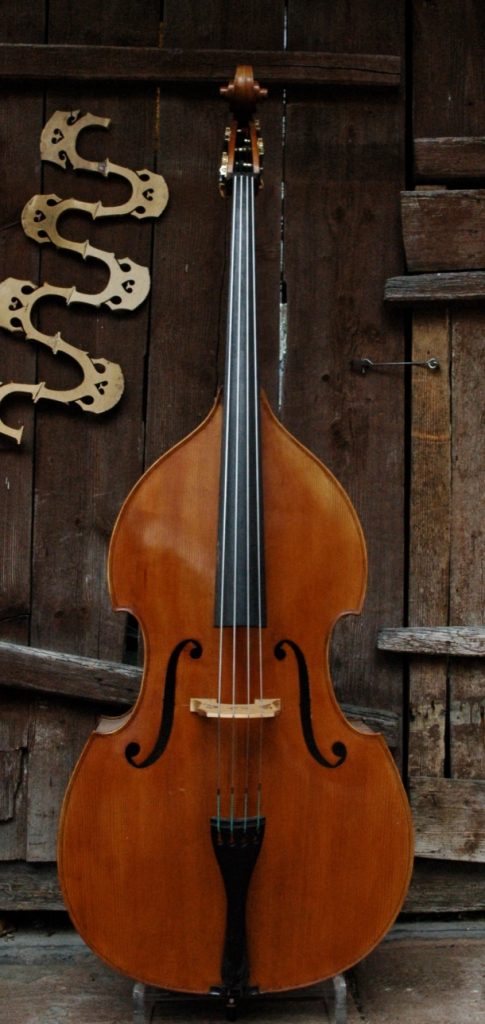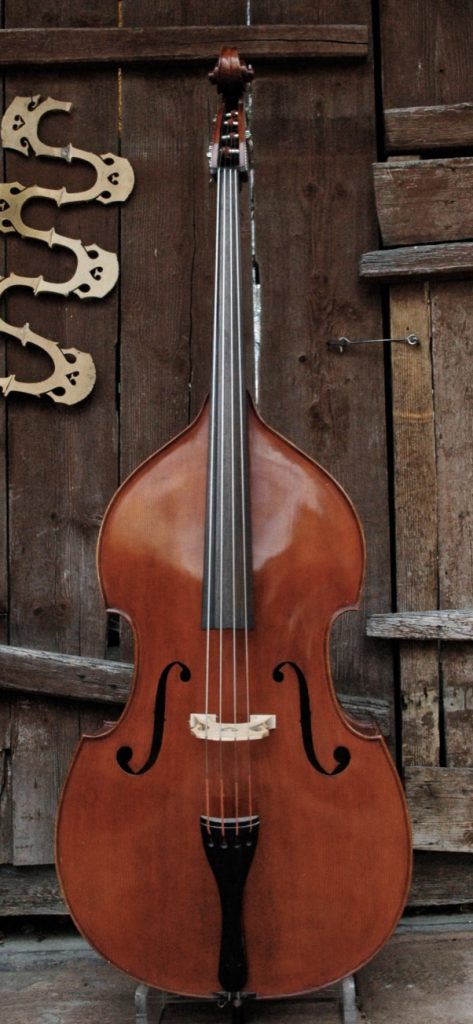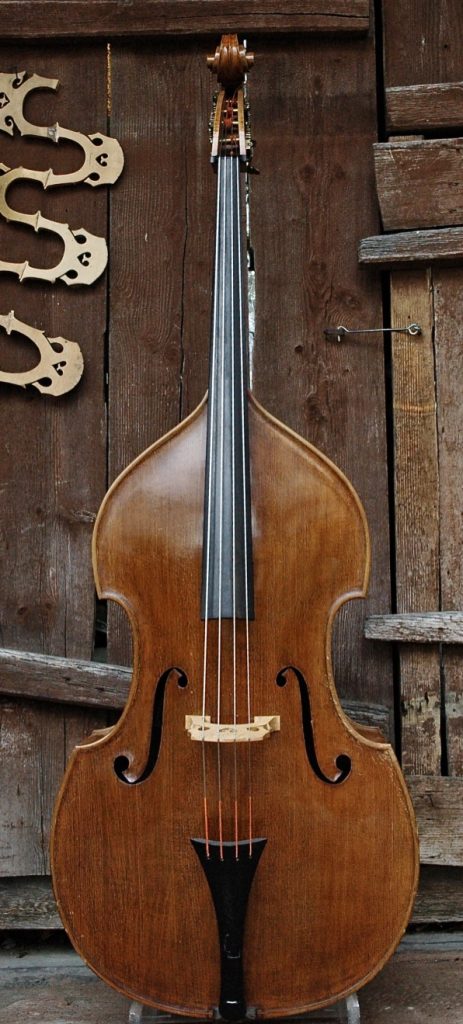Kontrabässe
Kontrabass-Modelle
Krattenmacher Solo Bass Model
This model, which I designed myself, is influenced by both the old English and the Italian school. At the same time, it carries unmistakable features of the 21st century and thus points the way to contemporary violin making. The rapid development of playing techniques and the accompanying expansion and differentiation of the repertoire have made it necessary to rethink the structures and use of the double bass. Designed for the physical and acoustic needs of a modern double bass player, my solo model is designed to provide the musician with comfort and the highest level of playability. By combining well-balanced contours, richness of sound as well as beauty and elegance, this bass is versatile – whether for solo performances, chamber music or jazz. The sound is centered and powerful, on the one hand cutting in the high registers, on the other hand warm in the lower frequencies, and it differs in a wide range of timbres.
Krattenmacher Orchestral Bass Model
Combining the best qualities of Brescia, Milan, Venice and England, the bass has a sound that blends well with other instruments. For this reason, it is very suitable as an orchestral instrument. At the same time there is a lot of power in this instrument, which is why it can be used especially well in jazz ensembles as well as a solo instrument.
string length 105cm
5-Stringer Model
I am constantly working on the further development of the 5-string. The playability, the sound quality, the volume as well as the balance between the higher and lower registers are one of my main concerns. However, I do not commit myself to a particular model, but rather make the model choice in collaboration with the musician in order to satisfy the needs and preferences of the individual and his orchestra.
Link to article about Klotz released in “Double Bassist” 23, Winter 2002
Fendt Model
Model after a double bass around 1820
The original of this model is played by the solo bassist of the National Opera of Wales, John Law. He is convinced that the sonority of his orchestra is essentially supported by the dimension of his instrument. “As if playing a whole string section” – so the musician raves about the power of this instrument.According to the model of a double bass by Maggini, this model also impresses with its grace and well-balanced contours, as well as by its enormous dimensions, but what for this construction period Due to the flat bottom, the deep frames and the strongly vaulted ceiling, this bass can be used to create an incredibly powerful, accurate and immediate sound, but the instrument’s strengths are not limited to the volume provided by the cabinet, but also in a sound quality that allows the musician to make a well-differentiated pianissimo even in the farthest rows of a large concert hall.
Dodd Model
Model after a double bass from 1820
Kaagstein Model
this is my biggest bass model. The Kaagstein brother were bassist at the Staatskapell Berlin and made perhaps around 10 – 15 double bass. The model is very much simular to the early Mittenwald makers, like the Klotz family, Rieger, Neuner and Hornsteiner. Actually I use a f hole drawn from a Sebastian Klotz viola. String length 109cm, it has got a dark powerful sound, great for enhancing a deep bass sound to the group and still it is remarkably easy to play. It also good for Continuo playing

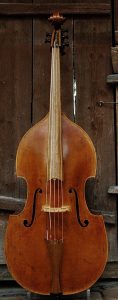 For a D-Violone I have used a Viennese model, based on a Fellenreither, for quite a few, but I also like to make Violones on Italien modells like Testore and Maggini.
For a D-Violone I have used a Viennese model, based on a Fellenreither, for quite a few, but I also like to make Violones on Italien modells like Testore and Maggini.